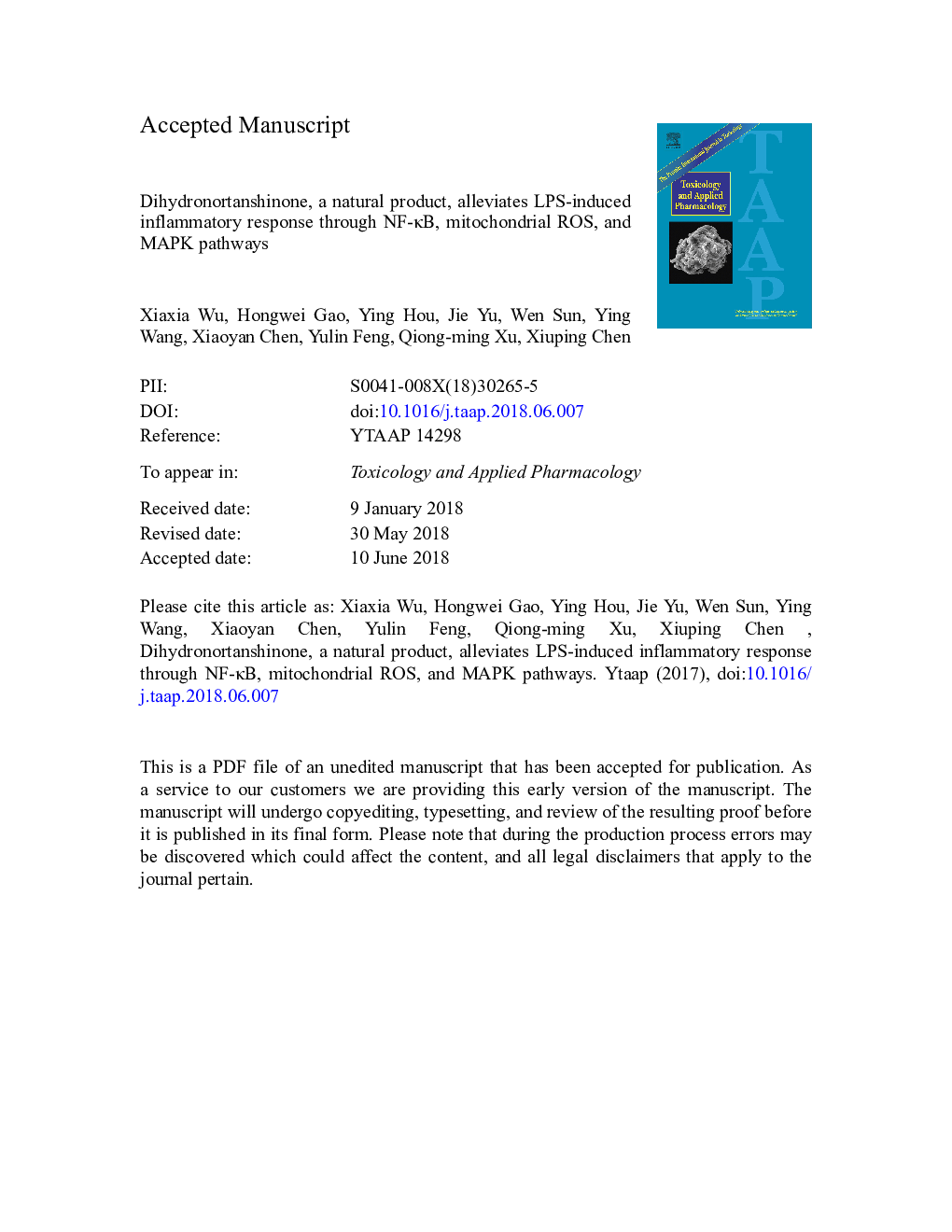| Article ID | Journal | Published Year | Pages | File Type |
|---|---|---|---|---|
| 8538064 | Toxicology and Applied Pharmacology | 2018 | 31 Pages |
Abstract
Inflammation is considered to be the common pathophysiological basis for a series of diseases. Documented data showed the anti-inflammatory effects of Salvia miltiorrhiza Bunge (Danshen), a traditional herb. The pharmacological activities of dihydronortanshinone (DNT), a tanshinone isolated from Danshen, remain unknown. In this study, the anti-inflammatory effects and underlying mechanisms of DNT were investigated with a lipopolysaccharide (LPS)-induced RAW264.7 macrophage model. DNT significantly suppressed LPS-induced inflammatory mediators such as nitrite oxide (NO), tumor necrosis factor α (TNF-α), interleukin 6 (IL-6), inducible nitric oxide synthase (iNOS). LPS-induced reactive oxygen species (ROS) generation was inhibited by DNT, rotenone (Rot), thenoyltrifluoroacetone (TTFA), and antimycin A (AA). Furthermore, DNT inhibited LPS-induced NF-κBp65 phosphorylation, nuclear translocation, as well as JNK1/2 and p38MAPK phosphorylation. In addition, DNT interrupted Toll-like receptor 4 (TLR4) dimerization and molecular docking results suggested that it was buried in the pocket of TLR4-MD2 complex. In conclusion, DNT inhibited LPS-induced inflammation mainly through NF-κB, mitochondrial ROS, and MAPK pathways possibly mediated by interfering LPS-TLR4-MD2 complex.
Keywords
TLR4TTFALPSIL-6DNTMKP-1antimycin ACOX-2iNOSROSinflammationinterleukin 6tumor necrosis factor-αthenoyltrifluoroacetoneRotRotenoneinducible nitric oxide synthaseCyclooxygenase-2TNF-αlipopolysaccharideMacrophageNitric oxideMitogen-activated protein kinase phosphatase-1Reactive oxygen speciesToll-like receptor 4
Related Topics
Life Sciences
Environmental Science
Health, Toxicology and Mutagenesis
Authors
Xiaxia Wu, Hongwei Gao, Ying Hou, Jie Yu, Wen Sun, Ying Wang, Xiaoyan Chen, Yulin Feng, Qiong-ming Xu, Xiuping Chen,
